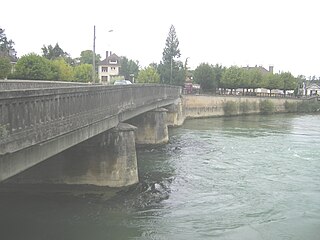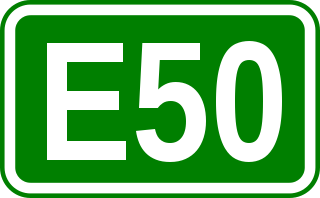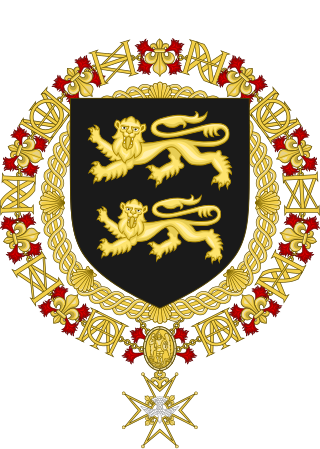This article needs additional citations for verification .(February 2024) |
| E17 | |
|---|---|
| Major junctions | |
| North end | Antwerp, Belgium |
| South end | Beaune, France |
| Location | |
| Countries | |
| Highway system | |
European route E17 passes through the following cities:
Contents

This article needs additional citations for verification .(February 2024) |
| E17 | |
|---|---|
| Major junctions | |
| North end | Antwerp, Belgium |
| South end | Beaune, France |
| Location | |
| Countries | |
| Highway system | |
European route E17 passes through the following cities:

Thoughts for creating the E17 started in the 1950s. Building of the motorway began in 1966 at Kortrijk. Belgian minister Omer Vanaudenhove had helped in funding the project by founding an intermunicipal association. The final large tracts of the road were finished in 1973. Until 1985, the road was named the European route E3. [1]

Transport in Belgium is facilitated with well-developed road, air, rail and water networks. The rail network has 2,950 km (1,830 mi) of electrified tracks. There are 118,414 km (73,579 mi) of roads, among which there are 1,747 km (1,086 mi) of motorways, 13,892 km (8,632 mi) of main roads and 102,775 km (63,861 mi) of other paved roads. There is also a well-developed urban rail network in Brussels, Antwerp, Ghent and Charleroi. The ports of Antwerp and Bruges-Zeebrugge are two of the biggest seaports in Europe. Brussels Airport is Belgium's biggest airport.

Champagne-Ardenne is a former administrative region of France, located in the northeast of the country, bordering Belgium. Mostly corresponding to the historic province of Champagne, the region is known for its sparkling white wine of the same name.

Châlons-en-Champagne is a city in the Grand Est region of France. It is the capital of the department of Marne, despite being only a quarter the size of the city of Reims.

Troyes is a commune and the capital of the department of Aube in the Grand Est region of north-central France. It is located on the Seine river about 140 km (87 mi) south-east of Paris. Troyes is situated within the Champagne wine region and is near to the Orient Forest Regional Natural Park.

Arcis-sur-Aube is a commune in the Aube department in the Grand Est region of north-central France.

The autoroute system in France consists largely of toll roads. It is a network of 11,882 km (7,383 mi) of motorways as of 2014. On road signs, autoroute destinations are shown in blue, while destinations reached through a combination of autoroutes are shown with an added autoroute logo. Toll autoroutes are signalled with the word péage.

The A26 is a 357.6 km (222.2 mi) long French motorway connecting Calais and Troyes. It is also known as the Autoroute des Anglais as its length forms the first part of the main route from the Dover-Calais ferries and the Channel Tunnel towards Southern and Eastern France and the Cote d'Azur. The motorway is used by a high proportion of British cars, particularly during the summer holiday season. The A26 between Calais and Arras is part of one of the two main routes between London and Paris, the other being the A16.

European route E 50 is an A-type east–west connection across the European continent. It connects the key naval port of Brest in France with Makhachkala, on the Caspian Sea in the Russian republic Dagestan.

The A5 Autoroute, which was constructed in 1990 to relieve the A6, links the Parisian region with the Langres area. It is a 238 km toll road under the management of the Autoroutes Paris-Rhin-Rhône (APRR). It makes up parts of the European routes E54, E511, and E17. Before the A5 was completed, the section linking Troyes with Langres was known as the A26. This route crosses the departments of Seine-et-Marne, Yonne, Aube and Haute-Marne.

The Route nationale 19 (N19) is a trunk road (nationale) in north east France. The road forms part of European route E54.

The University of Reims Champagne-Ardenne, also known simply as the University of Reims, is a public university based in Reims, France.

Bussy-le-Château is a commune in the Marne department in the Grand Est region of Northeastern France.

European route E3 is a series of roads in France, part of the United Nations International E-road network. It runs from Cherbourg to La Rochelle.

European route E 54 is a road that is part of the International E-road network. It runs from Paris, France to Munich, Germany.

The N8 road in Belgium is a road connecting Brussels and Koksijde, passing Ninove, Oudenaarde, Kortrijk, Ypres and Veurne.

Grand Est is an administrative region in northeastern France. It superseded three former administrative regions, Alsace, Champagne-Ardenne and Lorraine, on 1 January 2016 under the provisional name of Alsace-Champagne-Ardenne-Lorraine, as a result of territorial reform which had been passed by the French Parliament in 2014.

Joachim de Dinteville ( –1607) was a French noble, lieutenant-general and favourite of Henri III and Henri IV. Born into a prominent Champenois family of the noblesse seconde, Dinteville became close with Anjou, brother to Charles IX. In 1572 he was elevated to the position of Premier Gentilhomme de la Chambre by the duke, a key role in his household. He travelled with Anjou for the conduct of the siege of La Rochelle in 1573, and fought with him there. Upon Anjou's election as king of the Commonwealth, he travelled east with his lord, and served in his household for his brief tenure as king there. On Anjou's return to take the crown of France, Dinteville departed from his household, assuming responsibilities in Champagne, where he led the Second Estate of Troyes in opposing the attempt of Guise to affiliate the city with the national Catholic ligue. As Henri's brother Alençon moved closer to his plans of assuming the kingship of the rebellious Spanish Netherlands, Dinteville assisted the king in attempting to draw him, and thus France away from a potential confrontation with Spain. He assisted Henri's mother Catherine de Medici in her negotiations with Henri's cousin Navarre in 1579. In December of that year, Henri appointed Dinteville to replace the aged sieur de Barbizieulx as lieutenant-general of Champagne, making him second only to the governor Guise. Henri recognised Dinteville's valuable connections across the noblesse seconde of the province.